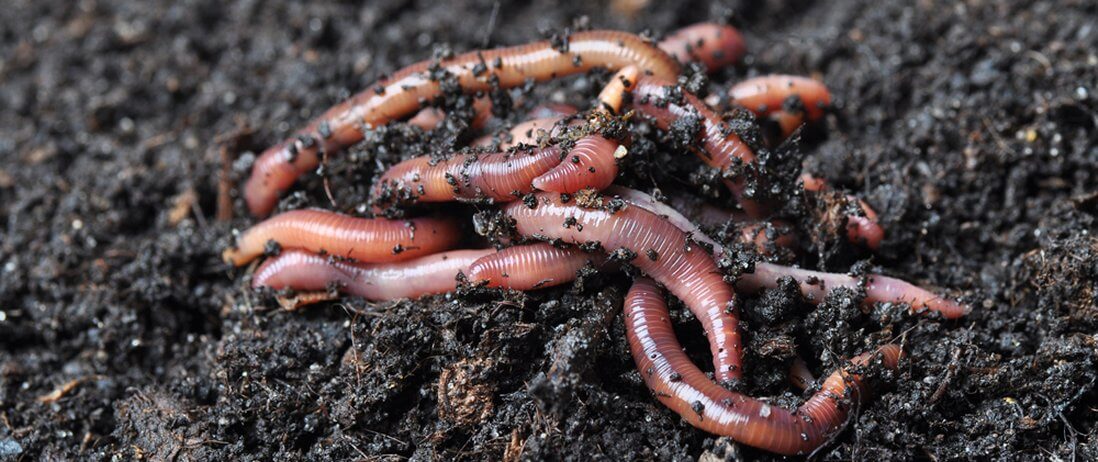
Well now, looks like our customers’ flower beds & gardens might have some uninvited guests that like to hop and wiggle! A squirmy sort of worm called "jumping worms" from Asia has arrived, and they’re causing quite a stir underground with their splashy dance moves.
Unlike common earthworms, these little buggers can spring up to 5 feet when disturbed! They thrash about like their nightcrawler cousins got two left feet. Plus, they shed their tails quicker than my Uncle Phil dashes for doughnuts. Mama Mia!
Turns out these dramatic worms don’t just crave the limelight - they leave messy piles of grainy soil that drives planted away while causing the soil to lose the ability to retain moisture like their friendlier cousins do. And they’re wriggling into flower beds & gardens faster than Aunt Gretchen’s prize-winning squash. So, get ready folks - these jumping worms are here to boogie, and they might just jump their way into every backyard bash! Time to rally the troops. The worms have gone wild, and they’re just getting warmed up to jiggle!
The Uninvited Guests
Originating from eastern Asia, these squiggly squatters first wriggled their way into the US in about 2013. Unlike your run-of-the-mill earthworm, these critters come with a unique party trick: when disturbed, they thrash, spring into the air, and can even ditch their tails to make a daring escape. Talk about a dramatic exit!
A Soil Story Gone Wrong
Now, you might think, "What's the harm in a little soil aerobics?" Well, these worms turn the soils into what looks like a pile of discarded coffee grounds. This transformation not only makes the soil less welcoming for plants but also invites invasive species to move in and take over. It's like throwing a party and having that one guest who never leaves.
The Dirt on Detection
Spotting these lively lodgers is a bit of a challenge. They're not the type to burrow deep but prefer the topsoil's top shelf VIP lounge. Look for them in flower beds, mulch pile, or even in potted plants. And if you see soil that looks suspiciously like your morning espresso's leftovers, you might just have a jumping worm infestation on your hands.
The Battle of the Worms
In a wriggly showdown, how do you tell a jumping worm apart from its European cousin, the nightcrawler? Well, the jumping worm is the sleek model of the worm world, with a smooth, glossy body and a penchant for thrashing movements. The nightcrawler, on the other hand, is more of the laid-back type, wiggling and stretching without much fuss.
What's to Do?
Before you declare all-out war on these jumpy jesters, remember, there's no silver bullet for dealing with them. The best defense is a good offense, be vigilant, educate your troops, and encourage your customer to be on the lookout to prevent their spread. And if you do find them, consider it an opportunity to experiment with new plants and gardening techniques or if all else fails, go full medieval on them! After all, necessity is the mother of invention!
There you have it, a glimpse into the jumping worm jamboree happening right beneath our feet. While they may not be the guests we asked for, they're keeping us on their toes. And who knows? With a bit of ingenuity and patience, we might just learn to coexist with these lively additions to our backyard biodiversity.
For more insights and prevention tips, explore these resources:
University of Minnesota Extension on Jumping Worms: Prevention is key to managing these worms.
Invasive Jumping Worms | University of Maryland Extension: Offers prevention and physical removal strategies.
Wisconsin DNR's Guide on Jumping Worms: Comprehensive prevention strategies to avoid spreading these invasive critters.
So inspect that beds, folks! Any flowers sprouting out of suspicious dirt? Time to confirm if it’s just nightcrawlers throwing a shindig, or them rude jumper worms crashing the party with their funky soil salsa dancing! With some vigilance, we’ll figure out how to gently boot these worms off the VIP list.




Leave a Reply